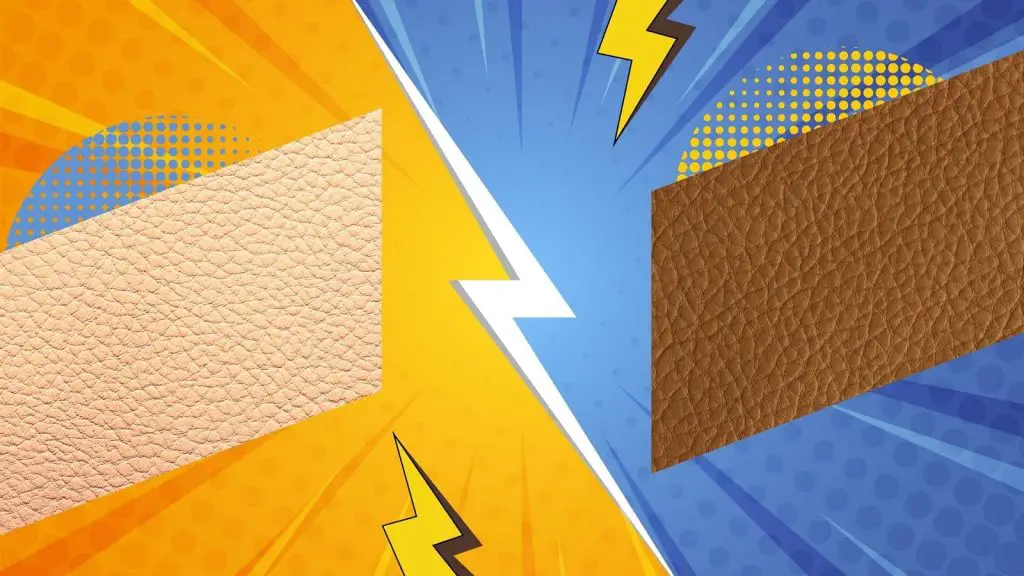Digital printing is transforming the industry with its sustainable and eco-friendly practices. This article delves into how digital printing is a greener alternative, its positive impact on the environment, and practical tips for integrating these practices, particularly in fabric printing and using recycled paper.
Is Digital Printing Sustainable?
Yes, digital printing is sustainable. This printing method cuts down on the waste and pollution that traditional printing techniques often generate. Digital printing uses less ink and fewer chemicals, reducing the environmental footprint. It’s a process that doesn’t require plates or other materials associated with conventional printing, meaning less physical waste is produced. Energy consumption is also lower in digital printing, making it a more sustainable choice for businesses and consumers looking to reduce their ecological impact.
Is Digital Printing Eco Friendly?
Yes, digital printing is eco-friendly. Unlike traditional methods, digital printing minimizes the use of harmful chemicals, leading to a significant reduction in hazardous waste. It allows for precise printing, meaning less ink is wasted, and because it’s a direct process, there’s less consumption of paper and other resources. The ability to print on demand also reduces overproduction and material wastage, contributing to its eco-friendly nature. With advancements in technology, the eco-friendliness of digital printing continues to improve, aligning with the growing environmental consciousness in various industries.
Is Digital Printing on Fabric Eco Friendly?
Yes, digital printing on fabric is eco-friendly. This method significantly reduces water usage compared to traditional fabric printing techniques, which are notorious for their heavy water consumption. Digital fabric printing also minimizes dye wastage and reduces energy consumption by enabling faster processing times. Since it allows for detailed and precise designs, there’s less need for corrections and reprints, which in turn reduces material waste. By choosing digital printing on fabric, manufacturers and designers can contribute to a more sustainable fashion industry, aligning with the increasing consumer demand for eco-friendly products.
Environmental Impact of Digital Printing
Digital printing offers a cleaner alternative to traditional methods. It’s important to understand its environmental benefits. Digital printing’s impact on the environment is significantly lower than that of conventional printing.
Reduced Chemical Usage
Digital printing uses fewer chemicals, which is a major benefit. Traditional printing methods often involve toxic chemicals that can harm the environment. In contrast, digital printing’s streamlined process reduces the need for such substances, leading to cleaner waste management. This reduction in chemical use is crucial for minimizing the environmental footprint of the printing industry.
Less chemical usage means less pollution. With fewer hazardous substances released into the air and water, digital printing supports a healthier planet. This approach aligns with global efforts to reduce industrial pollution and protect natural ecosystems.
Energy Efficiency
Digital printing is energy efficient. Compared to traditional methods, it consumes less power, contributing to energy conservation. This efficiency is not just good for the environment; it also helps businesses save on energy costs.
Lower energy consumption means reduced greenhouse gas emissions. By using less energy, digital printing helps combat climate change. This is vital in the current global context, where reducing carbon footprints is a priority for industries worldwide.
Waste Reduction in Digital Printing
Minimizing waste is a key advantage of digital printing. It’s crucial to explore how this technology achieves such efficiency. By reducing waste, digital printing contributes to a more sustainable world.
Material Efficiency
Digital printing is precise, reducing material waste. This precision ensures that only the necessary amount of fabric or paper is used, avoiding excess. Such efficiency is essential for sustainable resource management.
By being material-efficient, digital printing supports the concept of a circular economy. In this economy, resource use is optimized, and waste is minimized, promoting a healthier environment. This approach is increasingly important as industries strive for sustainability.
On-Demand Printing
On-demand printing is a core feature of digital technology. It allows for printing exactly what is needed, reducing overproduction. This capability is crucial for avoiding unnecessary waste and aligning with sustainable practices.
On-demand printing also means less storage and less material spoilage. By producing only what is needed, businesses can avoid the environmental and financial costs associated with excess inventory. This efficiency is a significant step toward eco-friendly production practices.
Advancements in Digital Printing Technology
Continuous improvements in digital printing technology enhance its eco-friendliness. These advancements are worth exploring to understand the future of sustainable printing. Innovations in digital printing are making it even more environmentally friendly.
Eco-Friendly Inks
Developments in eco-friendly inks are transforming digital printing. These inks are less harmful to the environment and safer for people. Using such inks is a step toward greener printing practices.
These new inks often come from renewable sources and are biodegradable. This shift is crucial for reducing the environmental impact of printing. It shows the industry’s commitment to sustainability.
Enhanced Printing Equipment
Technological advancements have led to more efficient printing equipment. Modern digital printers are designed to be energy-efficient and produce less waste. These improvements are crucial for reducing the ecological footprint of the printing industry.
Better equipment means higher quality printing with less resource use. This efficiency not only benefits the environment but also helps businesses reduce costs. As technology evolves, the potential for even greener printing methods grows.
Digital Printing’s Role in Sustainable Industries
Digital printing is not just about reducing waste or using less energy. It plays a broader role in promoting sustainability across various industries. Understanding this role is key to appreciating the value of digital printing in today’s world. The integration of digital printing into sustainable practices is evident across sectors.
Fashion Industry
In the fashion industry, digital fabric printing is revolutionizing eco-friendly production. By using less water and dye, it offers a sustainable alternative to traditional fabric printing. This change is crucial in an industry known for its significant environmental impact.
Digital printing allows for detailed designs without excess waste, supporting sustainable fashion trends. As consumers become more eco-conscious, the demand for sustainably produced garments grows. Digital printing is at the forefront of meeting this demand.
Packaging Industry
The packaging industry is another sector where digital printing is making a difference. By allowing for smaller, customized print runs, it reduces waste and energy use. This adaptability is key to producing sustainable packaging.
Digital printing in packaging also supports recycling efforts. With easier customization, packaging can be designed for better recyclability, aligning with circular economy principles. This approach is essential for reducing the industry’s environmental impact.
How is Digital Printing Sustainable?
Digital printing stands out as a sustainable choice in the printing industry. Its environmental benefits are substantial and worth noting. This printing method significantly reduces waste and energy consumption, aligning with sustainability goals.
Resource Conservation
Digital printing excels in conserving resources. It requires less water and energy than traditional methods, making it a greener option. This conservation is crucial for reducing the overall environmental impact of the printing industry.
The technology behind digital printing is designed to minimize waste. By using only the necessary amount of ink and materials, it avoids the excesses common in conventional printing. This efficiency is key to its sustainability.
Pollution Reduction
Digital printing also contributes to less pollution. By using fewer chemicals and producing less waste, it helps keep our air and water cleaner. This reduction in pollution is a significant step towards a more sustainable future.
The process is designed to emit fewer greenhouse gases, which is vital in the fight against climate change. By choosing digital printing, businesses and individuals can contribute to a healthier planet.

How to Print Digital Paintings on Recycled Paper?
Printing digital paintings on recycled paper is an eco-friendly practice that combines art with sustainability. This approach not only showcases creativity but also demonstrates environmental responsibility. Here’s how to do it effectively.
Choosing the Right Paper and Printer
Selecting the appropriate recycled paper is crucial for quality results. Look for recycled paper that is compatible with digital printing to ensure that your artwork looks its best. The printer you use should also be suitable for handling recycled paper and eco-friendly inks.
It’s important to adjust the printer settings to match the specific type of recycled paper. This adjustment ensures optimal print quality and prevents paper waste. Testing with a small sample first can help you get the settings right.
Using Eco-Friendly Inks
For printing digital paintings on recycled paper, eco-friendly inks are a must. These inks are designed to be less harmful to the environment and work well with recycled materials. They provide vibrant colors without compromising sustainability.
By using eco-friendly inks, you not only produce beautiful artwork but also contribute to reducing harmful emissions. This choice reflects a commitment to both art and environmental stewardship.
FAQs
How does digital printing contribute to energy conservation?
Digital printing contributes to energy conservation by using less electricity compared to traditional printing methods. This efficiency is due to the elimination of the need for plate-making and shorter setup times, which significantly reduces the energy used in the printing process.
Can digital printing be used for all types of fabrics?
Digital printing can be applied to a wide range of fabrics, but its effectiveness varies depending on the material. It works best on polyester and cotton. Some fabrics may require pre-treatment to ensure the ink adheres properly and the colors are vivid.
Is digital printing faster than traditional printing methods?
Yes, digital printing is generally faster than traditional printing methods because it eliminates many of the preparatory steps required in conventional printing, such as creating plates. This speeds up the overall process, especially for small to medium print runs.
How does digital printing reduce ink waste?
Digital printing reduces ink waste by precisely applying ink only where it is needed for the design, unlike traditional methods that may involve excess ink usage. This precision helps conserve ink and reduces the risk of excess ink contaminating the environment.
Are there any limitations to digital printing?
While digital printing offers many advantages, it has some limitations, such as a higher cost per unit for large volume orders compared to traditional methods. Additionally, the color range can be slightly limited compared to some conventional printing techniques.
Can digital prints be recycled?
Digital prints can be recycled depending on the substrate used. Paper products are typically recyclable, but the recyclability of printed fabrics or other materials can vary. It’s important to consider the type of ink and substrate used to determine if the printed product is recyclable.
How does the quality of digital printing compare to traditional printing?
The quality of digital printing is generally high, offering sharp details and a wide range of colors. However, the quality can depend on various factors, including the printer’s resolution, the quality of the inks, and the substrate. In many cases, digital printing provides a quality comparable to or even superior to traditional methods.
Is digital printing suitable for outdoor materials?
Digital printing is suitable for outdoor materials, but the durability depends on the type of ink and substrate used. UV-curable inks and solvent-based inks are often used for outdoor applications because they offer greater resistance to weathering and fading.
Conclusion
Digital printing stands as a beacon of sustainability and eco-friendliness in the printing world. By embracing this technology, industries and individuals can contribute significantly to environmental conservation. Key takeaways include:
- Digital printing reduces waste and conserves resources, making it a sustainable choice.
- The use of eco-friendly inks and recycled paper further enhances the environmental benefits of digital printing.
- In the fashion industry, digital printing on fabric offers a path to more sustainable production methods.
- Customized, on-demand printing minimizes overproduction and aligns with sustainable business practices.
- Continuous technological advancements are making digital printing even more eco-friendly and efficient.
By understanding and implementing these practices, we can all play a part in promoting a more sustainable future.





